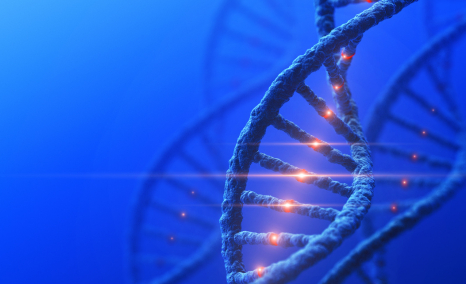
Apr 11, 2025
Prader-Willi Syndrome Drug Market Heats Up: 5 Upcoming Challengers to Soleno’s VYKAT XR

Apr 10, 2025
Jan 27, 2021
Table of Contents
As per the National Association of Anorexia Nervosa and Associated Disorders, (ANAD), worldwide, at least 9% of the population is affected by eating disorders. Eating disorders is a psychological condition that disturbs eating habits. Eating disorders affect thoughts and emotions, and the people with the disease become preoccupied with food, body shape and weight.
Eating Disorders can cause emotional and physical issues in the person that may also lead to life-threatening complications. There are many misconceptions associated with eating disorders such as it is a disease related to women and rich people. In some cases, people also come to the conclusion that it is not a serious disease, it’s a way to gain attention and media & publication unnecessary gives coverage to the disease. However, it is a serious mental illness and irrespective of the gender, age, race, sexual orientation and background, anyone can have an eating disorder. It is most commonly observed in adolescents and young adults. As per the Mental Health America, in the United States, “20 million women and 10 million men suffer from a clinically significant eating disorder at some time in their life, including anorexia nervosa, bulimia nervosa, binge eating disorder or Eating Disorder Not Otherwise Specified (EDNOS) (EDNOS is now recognized as Other Specified Feeding and Eating Disorders (OSFED), other specified feeding or eating disorder, per the DSM-5)”.
Article in PDF
Some of the most common factors for eating disorders include –
Various signs and symptoms mark an eating disorder. Generally, people with eating disorders get obsessed with fat content and calories in food. Along with these, the person also gets extremely critical about his appearance, body shape, weight, and sometimes gets upset or guilty about eating a particular type of food. Weight change, fatigue, concentration issues, frequent mood changes, anxiety, depression, negative feelings about food and body weight are some of the most common signs and symptoms of eating disorders.
Eating Disorders is diagnosed based on the physical exam conducted by the healthcare professional. In addition to it, a psychological evaluation is also done to evaluate the mental health of the person. If the eating disorder mains undiagnosed and untreated, it may cause complications in the cardiovascular system, kidneys, or digestive system. In some cases, a change in hormonal balances may also occur.
Besides the above listed, Body Dysmorphic Disorder (BDD) and Rumination Disorder are some other eating disorders.
Being a mental health condition, eating disorders may require treatment to overcome its effects. If it remains untreated, it may negatively impact the health of the person. In some situations, it may lead to a life-threatening condition. The stigma associated with the disease creates challenges for the person to seek help. Dignity, self-esteem, lack of social and parental support, feelings of shame, negative remarks are the key barriers to effective treatment. Similarly, the Interpersonal relationships and the fear of being negatively evaluated by parents and social groups make the person reluctant to seek help. Several treatment options are available to address the psychological, biological, and cultural factors of eating disorders. The type of care may vary from person to person; however, in some situations such as severe weight loss and high nutrition deficiency, the patients may be required to get hospitalised or recommended speciality care. The most common treatment options for eating disorders include-
Way ahead
Apart from physical and psychological health burden to the individual, the eating disorders can also result in substantial out-of-pocket expenditure on treatment. Eating disorders cause several disabilities and deaths worldwide every year, which directly affects the economy and society’s health. The burden of anorexia nervosa and bulimia nervosa is exceptionally high in the young females in high-income countries. However, it is observed that over the past few years, the burden of anorexia nervosa and bulimia nervosa has also increased in the low- and middle-income countries (LMICs). Cultural changes have directly influenced the eating disorder in LMICs. The stigma and misconceptions associated with eating disorders have a seriously negative impact on the affected individual.
However, increased awareness and education about the eating disorders, emerging treatment options, R&D in the diagnosis, and better health policy by the government will significantly impact the management of the eating disorders’ in coming decades.
Article in PDF

Apr 11, 2025

Apr 10, 2025
